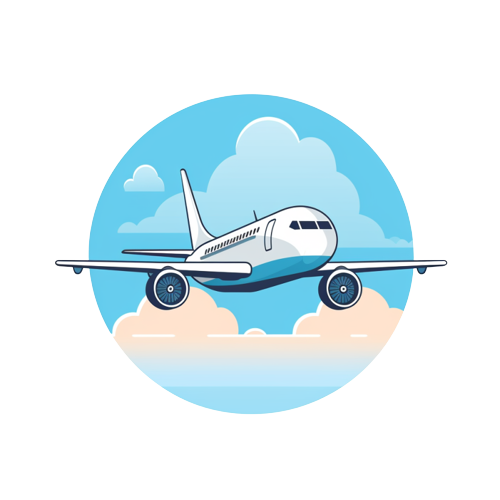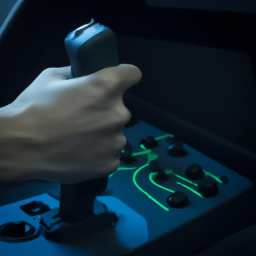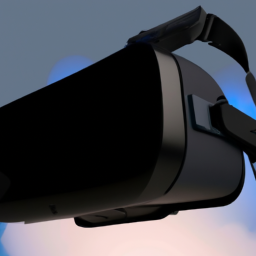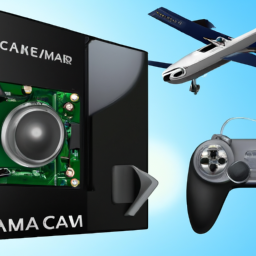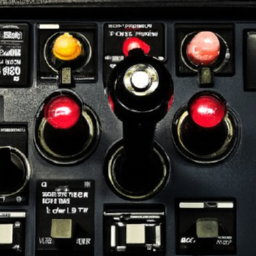In this article, we will explore the potential benefits of using flight simulators for learning to fly. You will discover how flight simulators can provide a realistic experience, allowing you to practice and develop crucial skills. We will also discuss the limitations of simulators and the importance of combining virtual training with real-world flying. By the end, you will have a better understanding of whether flight simulators can be an effective tool in your journey to becoming a pilot.
Understanding Flight Simulators
What are flight simulators?
Flight simulators are computer-based training systems that replicate the experience of flying an aircraft. They are designed to provide pilots with a realistic and immersive environment for training purposes. Flight simulators are equipped with various hardware and software components to simulate the controls, visual cues, and sounds of a real aircraft.
How do flight simulators work?
Flight simulators work by utilizing advanced computer graphics, physics engines, and input devices to create a virtual environment that closely resembles real-life flying conditions. The simulator software takes inputs from the pilot, such as control movements and throttle adjustments, and calculates the corresponding aircraft response. The visuals are displayed on a screen or virtual reality headset, and the pilot can navigate through the simulated world using controls such as a joystick or yoke.
Types of flight simulators
There are different types of flight simulators available, ranging from basic desktop setups to full-motion professional simulators used by commercial airlines. The most common types include desktop simulators, flight training devices (FTDs), and full flight simulators (FFS). Desktop simulators are software-based and can be installed on a regular computer. FTDs are more advanced and feature realistic controls and multi-screen displays. FFSs are the most immersive and include motion platforms and high-resolution visuals.
Benefits of using Flight Simulators
Enhances practical skills
Flight simulators provide an excellent opportunity for pilots to practice and refine their practical flying skills. They allow pilots to familiarize themselves with the aircraft controls, perform basic and advanced flight maneuvers, and practice landing and takeoff procedures. By repeatedly practicing these skills in a simulator, pilots can improve their muscle memory and overall proficiency.
Improves decision-making abilities
In addition to practical skills, flight simulators also enhance a pilot’s decision-making abilities. Simulators can simulate various weather conditions, system failures, and emergency situations, requiring pilots to make quick and informed decisions. By regularly exposing pilots to these scenarios in a controlled environment, flight simulators can help pilots develop their problem-solving skills and decision-making capabilities.
Reduces training costs
Flight training can be expensive, especially for aspiring pilots. The cost of renting an aircraft, instructor fees, fuel, and maintenance can quickly accumulate. Flight simulators offer a cost-effective alternative by providing realistic training experiences at a fraction of the cost. Simulators eliminate the expenses associated with fuel and aircraft rental, allowing pilots to practice their skills without breaking the bank.
Limitations of Flight Simulators
Lack of physical sensations
One of the main limitations of flight simulators is the lack of physical sensations experienced during real-life flying. Simulators cannot replicate the feeling of acceleration, turbulence, and G-forces that pilots encounter in an actual aircraft. While the visuals and sounds may be realistic, the absence of physical sensations can make it challenging to fully immerse oneself in the simulated environment.
Limited real-world experience
Flight simulators, no matter how advanced, cannot fully replicate the vast and diverse real-world flying experiences that pilots encounter. Each flight is unique, with varying weather conditions, air traffic, and airport operations. While simulators can mimic these scenarios to some extent, they can never fully capture the unpredictability and complexity of real-life flying.
Cannot fully replicate emergencies
While flight simulators are excellent tools for practicing emergency procedures, they cannot entirely replicate the stress and urgency associated with real-life emergencies. The emotional and psychological aspects of dealing with an actual emergency situation cannot be replicated in a simulated environment. Therefore, while simulators can provide pilots with essential knowledge and muscle memory for emergencies, real-life experience and training remain crucial.
Real-life Flight Training vs Simulator Training
Differences in hands-on experience
Real-life flight training offers a hands-on experience that simulators cannot fully replicate. The feeling of being in the cockpit, interacting with real aircraft systems, and physically maneuvering the controls is unparalleled. Real-life training also exposes pilots to the physical sensations and challenges of flying in different weather conditions, which cannot be replicated in a simulator.
Simulator advantages over real-life training
While real-life training offers unique benefits, flight simulators have their advantages as well. Simulators provide a controlled and safe environment for pilots to practice their skills without the risks associated with flying an actual aircraft. They allow pilots to repeat maneuvers, practice emergency procedures, and explore different scenarios without the constraints of time, weather, or fuel limitations.
Combining simulator and real-life training
The most effective pilot training programs often combine both simulator and real-life training. Simulators can be used to introduce pilots to fundamental skills, basic flight maneuvers, and emergency procedures. Real-life training then builds upon these foundations, allowing pilots to apply their simulator learning in a real aircraft. By combining both approaches, pilots can benefit from the best of both worlds and enhance their overall learning experience.
Choosing the Right Flight Simulator
Considerations for selecting a flight simulator
When selecting a flight simulator, it is essential to consider factors such as budget, training goals, and available space. Desktop simulators are more affordable and suitable for individual practice, while FTDs and FFSs offer more realistic experiences but come at a higher cost. It is also important to assess the simulator’s compatibility with the desired aircraft models, software requirements, and available support and updates.
Hardware and software requirements
Flight simulators require specific hardware components, such as a joystick or yoke, rudder pedals, and a computer with sufficient processing power and graphics capabilities. Additionally, simulator software must be regularly updated to ensure access to the latest features and aircraft models. It is crucial to ensure that the chosen simulator meets the necessary hardware and software requirements to deliver a satisfactory training experience.
Availability of aircraft models
Different flight simulators vary in terms of the aircraft models they offer. Some simulators may have a wide range of aircraft models, including various types and models, while others may be limited in their aircraft selection. Pilots should consider their specific training needs and the availability of aircraft models that align with their training objectives when choosing a flight simulator.
Training Scenarios and Exercises
Basic flight maneuvers
Flight simulators provide an ideal platform for practicing basic flight maneuvers, such as climbs, descents, turns, and coordinated flight. Pilots can repeatedly perform these maneuvers in a simulator to develop muscle memory and refine their control inputs. Simulators also allow for real-time feedback, enabling pilots to assess their technique and make necessary adjustments.
Navigational exercises
Navigational exercises, such as flight planning, radio communication, and instrument approaches, are an essential part of pilot training. Simulators enable pilots to practice these exercises in a realistic and controlled environment. Simulated navigation scenarios can include cross-country flights, handling air traffic communications, and executing instrument approaches to different airports.
Emergency procedures
Flight simulators are particularly useful for practicing emergency procedures. Pilots can simulate engine failures, equipment malfunctions, and other emergency scenarios to practice their response and decision-making abilities. By repeatedly practicing these procedures in a simulator, pilots can build confidence and efficiency in handling emergencies.
Evaluating Simulator Performance
Metrics for assessing simulator performance
When evaluating the performance of a flight simulator, several metrics can be considered. These include the simulator’s visual and audio realism, the accuracy of aircraft systems and flight dynamics, the responsiveness of controls, and the efficiency of the feedback and evaluation process. Pilots should assess each of these metrics to determine the suitability of the simulator for their training needs.
Accuracy and realism of simulator
The accuracy and realism of a simulator are crucial factors in its effectiveness as a training tool. A realistic flight model that accurately replicates the behavior of the chosen aircraft is essential for developing essential flying skills. The simulator’s visuals should be immersive and true to life, providing pilots with a realistic representation of the external environment.
Feedback and evaluation process
Effective feedback and evaluation are essential for monitoring progress and identifying areas for improvement. Simulators should provide comprehensive feedback regarding the pilot’s performance, including measurements of key parameters such as altitude, airspeed, and vertical speed. The evaluation process should be systematic and allow pilots to track their progress over time.
Integration with Pilot Licensing
Recognition of simulator training by aviation authorities
Aviation authorities, such as the Federal Aviation Administration (FAA) in the United States, recognize the value of simulator training as part of a pilot’s overall training curriculum. Simulators that meet certain standards and criteria can be used to log flight hours and fulfill specific training requirements. The use of simulators for training purposes is subject to regulations and guidelines set by aviation authorities.
Requirements for obtaining a pilot license
While simulator training can enhance a pilot’s skills and knowledge, it is important to note that real-life flight experience is a significant requirement for obtaining a pilot license. The specific flight hour requirements vary depending on the type of license being pursued, such as a private pilot license or an airline transport pilot license. Simulator training can supplement these flight hours but cannot fully replace them.
Supplementing flight hours with simulator training
Simulator training can be valuable in supplementing flight hours and meeting training requirements. For example, the FAA allows a certain number of flight hours to be logged in an approved flight simulator for specific pilot certificates and ratings. This flexibility offers aspiring pilots a more cost-effective and efficient way to meet the required flight hours while still gaining valuable training experience.
Current Trends in Flight Simulator Technology
Advancements in virtual reality (VR) simulation
Virtual reality (VR) technology is revolutionizing the flight simulator industry. VR simulators provide a highly immersive experience, allowing pilots to feel more connected to the virtual environment. VR headsets and motion-tracking systems enable pilots to physically move their heads and look around, enhancing the sense of realism and situational awareness.
Enhancements in graphics and realism
Flight simulator graphics have come a long way in recent years. With advancements in computer graphics technology, simulators now offer stunning visuals, realistic lighting effects, and detailed aircraft models. High-resolution displays, combined with accurate terrain and weather rendering, further contribute to the realism and immersion of the simulated experience.
Integration of artificial intelligence
The integration of artificial intelligence (AI) in flight simulators is another emerging trend. AI can be used to create realistic virtual air traffic and simulate realistic human-like behavior in other aircraft. This helps pilots practice their decision-making skills in a dynamic and realistic environment. AI can also be used to provide intelligent feedback and coaching to pilots, enhancing the overall training experience.
Conclusion
Flight simulators are valuable tools for pilot training, offering a cost-effective and safe way to learn and practice flying skills. While they cannot fully replicate the physical sensations and complexities of real-life flying, simulators provide pilots with a realistic and immersive training environment. By complementing real-life training with simulator practice, pilots can enhance their learning, improve decision-making abilities, and reduce training costs. With constant innovations in technology, flight simulators will continue to evolve and improve, further enhancing their effectiveness as training tools. So, can flight simulators actually help you learn to fly? The answer is a resounding yes.
